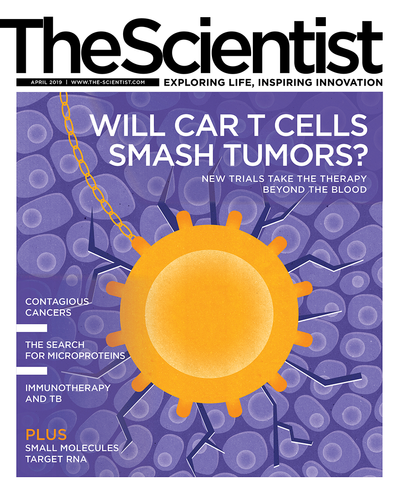Above: © doug coombe Photography
Sophia Lunt’s career in cancer research started with soap.“Soap is both polar and nonpolar, so it binds to nonpolar grease and also to polar water when you go to wash it away,” the Michigan State University chemist says, recalling a high school science lesson. “I thought that was really cool and wanted to learn more about molecules.”
Lunt attended Lebanon Valley College in Annville, Pennsylvania, and majored in chemistry. She graduated in 2005, and not long after started her PhD at Princeton University, eventually joining the lab of chemist Joshua Rabinowitz. There, she published research (under her maiden name Kwon) on how anti-metabolite drugs affect metabolism to stop bacterial growth.1
After earning her PhD in 2010, she wanted to connect chemistry to human disease, so she joined Matthew Vander Heiden’s cancer metabolism lab as a postdoc at MIT. Lunt was fascinated...
One year into her postdoc, her husband Richard, an inventor of invisible solar cells who was also a postdoc at MIT, accepted a professorship at Michigan State University (MSU). “We did long distance for a while,” Lunt says, “but it was really tough.” She talked with Vander Heiden about the challenge, and he helped her figure out how to move to MSU and finish her postdoc there. Lunt had received a Department of Defense Visionary Postdoctoral Fellowship, giving her funding to develop her own line of research. The only stipulation of the fellowship was that she work in the lab of an assistant professor who had not yet received federal funding. MSU cancer researcher Eran Andrechek fit the bill. He had recently joined the university and was studying breast cancer development and metastasis.
Not long before Lunt joined Andrechek’s group, the lab completed a genetic profile of transcription factors involved in metastasis. When Lunt looked at the data, she realized the transcription factors were known to regulate several metabolic genes, so she started looking at the pathways those genes influence and found that many participate in the breakdown of glucose. “That got the ball rolling for comparing metabolism in metastatic and non-metastatic cancer cells,” Andrechek says.
Lunt delved deeper into that work when she started her own lab at MSU in 2015. She teamed up with the National Cancer Institute’s Kent Hunter, who bred mice so that their offspring had varying levels of metastasis. Analyzing the mice’s tumor metabolites revealed one, sialic acid, that had never before been associated with metastasis. Cell-line experiments revealed that metastatic cells make more of an activated form of sialic acid, which can modify the surface proteins of cells to influence how sticky they are and whether or not they leave the primary tumor, Lunt says. Knocking out a gene essential for sialic acid metabolism blocks the formation of the activated form of the compound, reducing metastasis.3
“Sophia is smart. She’s well-trained, motivated, imaginative,” Hunter says. “People like that tend to do well in this business.”
References
- Y.K. Kwon et al., “A domino effect in antifolate drug action in Escherichia coli,” Nat Chem Bio, 4:602–08, 2018. (cited 74 times)
- S.Y. Lunt and M.G. Vander Heiden, “Aerobic glycolysis: Meeting the metabolic requirements of cell proliferation,” Annu Rev Cell Dev Biol, 27:441–64, 2011. (cited 1214 times)
- S.T. Teoh et al., “Sialic acid metabolism: A key player in breast cancer metastasis revealed by metabolomics,” Front Oncol, doi: 10.3389/fonc.2018.00174, 2018. (cited 8 times)
Interested in reading more?







